PULI
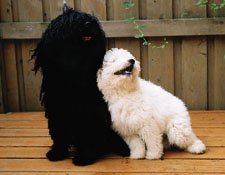
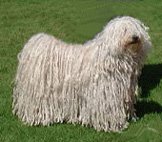
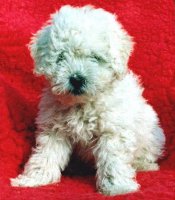
FCI Standard N° 55 / 13.09.2000 / GB
TRANSLATION: Mrs C. Seidler and Mrs Elke Peper.
ORIGIN: Hungary.
DATE OF PUBLICATION OF THE ORIGINAL VALID STANDARD: 06.04.2000
UTILISATION: Herding dog.
SUGGESTED BREEDINGS by MENANDPETS.COM:
No breeding to signal
if you want to know like signaling yours, contacts: marketing@inseparabile.it
CLASSIFICATION FCI: Group 1 Sheepdogs and Cattle Dogs (Except Swiss Cattle Dog).
Section 1 Sheepdogs.
Without working trial.
BRIEF HISTORICAL SUMMARY : The Puli is a Hungarian herding breed of Asiatic origin. His original ancestors most probably came to the Carpathian Basin with the migrating ancient Magyars, who lived as nomads on stock-breeding.
GENERAL APPEARANCE : Dog of medium size with strong constitution, square build and fine, but not too light bones. The somewhat lean body is well muscled all over. The construction of the individual body parts is difficult to judge, as the whole body is covered by a strongly developed coat, tending to form curls and cords. It is therefore useful to touch the dog when judging. The coat on the head is so profuse that the head appears round and the eyes are covered. The profusely coated tail, curled forward over the back, gives the appearance of the topline rising slightly towards the rear.
IMPORTANT PROPORTIONS
· The body length is equal to the height at the withers.
· The depth of the brisket is slightly less than half of the height at the withers.
· The length of the muzzle is one third of the total length of the head.
BEHAVIOUR / TEMPERAMENT : Of lively temperament, extremely able to learn. Loves children and is an excellent watchdog. His present shape has adapted him to sporting use.
HEAD : Seen from the front, round, seen from the side appears to be elliptic.
CRANIAL REGION
Skull : Small and fine. Superciliary ridges strongly developed.
Stop : Barely developed.
FACIAL REGION
Nose : Rather small, black.
Muzzle : Not pointed; bridge of nose straight.
Lips : Taut, with dark pigmentation.
Jaws/Teeth : Complete scissor bite according to the dentition formula. 42 teeth.
Eyes : Of medium size, dark brown, set in slightly oblique and medium wide apart. The expression is lively and intelligent. Rims of lids close-fitting to the eyeball and well pigmented.
Ears : Set on at medium height with broad base. The pendant leathers V-shaped with rounded tips.
NECK : Of medium length, taut, well muscled. Forms an angle of about 45 degrees to the horizontal and is covered by dense coat.
BODY
Topline : Straight. Giving the impression of rising slightly towards the rear because of the tail carriage.
Withers : Only slightly projecting from the topline.
Back : Of medium length, straight, dry and muscular.
Loin : Very strongly muscled, short.
Croup : Short, slightly sloping.
Chest : Deep, long with well arched ribs.
Underline : Gradually rising towards rear.
TAIL : Set on at medium height and carried in a flat curl over the croup. Well covered by dense coat. When stretched out, it reaches to the hocks.
LIMBS
FOREQUARTERS
Shoulders : Shoulder blade sloping, tightly fitting to the brisket. A vertical line from the withers touches the front part of the chest at its deepest point. The angle between shoulder blade and upper arm is 100 to 110 degrees.
Upper Arm : Medium long, well muscled.
Elbows : Lying closely to the brisket. Angle between upperarm and forearm : 120 to 130 degrees.
Forearm : Long, straight, with dry muscles.
Forefeet : Short, rounded, tight with well knit toes. Nails black or dark slate grey. Pads dark in colour and springy. Feet parallel, pointing forward and medium wide apart.
HINDQUARTERS : The legs are medium wide apart and parallel. The angle between pelvis and upper thigh is about 100 to 110 degrees. Angulation of stifle joint 100 to 110 degrees.
Upper and lower thigh : Long and well muscled.
Hock : Dry, clean-cut.
Metatarsus : Short.
Hind feet : A little flatter than front feet, otherwise similar.
GAIT/MOVEMENT : Very lively and spirited. Steps short. The gait is often typically mincing and jumping. The dog has a tendency to spin round himself.
SKIN : Without wrinkles, tight, with strong pigment. The bare skin is black or slate grey in all coat colours.
COAT
HAIR : The puppy coat is dense, wavy or curly. Later, there are tufts of hair developing to tassels and cords. The coat consists of a coarser top coat and a finer undercoat. The relation between these two types of hair determines the character of the coat. If the topcoat highly predominates the undercoat, the coat structure is untypical and the coat sticks slightly out. If the undercoat is too highly predominant – which is undesirable – this results in a matted coat of too soft texture, difficult to groom. The correct proportion between the two types of hair, which is genetically fixed, produces the aesthetical tassels or cords, which are easy to groom. The cords on the loins and the croup and at the back of the upper thighs are longest (20-30 cm). They are shortest on the head and at the limbs (10-12 cm). Coat on head is ideal when the hair forms a strong structure of cords covering the facial region. Both a combed out and a neglected, tousled coat are undesirable.
COLOUR
a) - Black.
- Black with few rusty coloured or grey shadings.
- Fawn (fakó) with a distinct black mask. A white patch at the forechest, not exceeding 3 cm in diameter, is permitted. White between the toes is not regarded as a fault.
b) - Pearl white without any russet gold (semmelblond).
Any colour or marking deviating from the above, is undesirable.
SIZE AND WEIGHT
HEIGHT
Dogs: 39 - 45 cm, Ideal height: 41 - 43 cm
Bitches: 36 - 42 cm, Ideal height: 38 - 40 cm.
WEIGHT
Dogs: 13 - 15 kg.
Bitches: 10 - 13 kg.
FAULTS : Any departure from the foregoing points should be considered a fault and the seriousness with which the fault is regarded should be in exact proportion to its degree.
ELIMINATING FAULTS
- Aggresive or overly shy.
- One or more missing teeth (incisors, canines, premolars 2-4, molars 1-2. More than two missing PM1.The M3 are disregarded.
- Over- or undershot, wry mouth.
- Tail carried in sickel shape or horizontally.
- Short, smooth, separately growing hairs.
- Faults in colour. Undesired markings and patches.
- Size deviating from the limits mentioned in the standard.
Any dog clearly showing physical or behavioural abnormalities shall be disqualified.
NB: Male animals must have two apparently normal testicles fully descended into the scrotum.
Automatic translate from inseparbile.com
Origini:
The Puli has crossed plains Hungarians with the Magiari thousand years ago, when they came used like dogs from flock. Many shepherds seemed to preprefer the dogs with the black cape, probably perch were devout easy to characterize them to the inside of the flock. The Puli was devout light and therefore agile in the movements and the race to difference of the Komondor, always dog from flock Hungarian, but devout great and impacciato and therefore only used in order to guard the crudes oil. To the time of the second world war this race was nearly passing with the exception of two exemplary that have assured the survival of this small dog Hungarian.
DESCRIPTION:
The Puli an ancient race of dog from flock Hungarian. Of medium dimensions, tarchiato, its cape is introduced cordato. From adult the cape of this dog succeeds in to touch the ground. In some sure countries colors are not allowed. The shape of the rather square body and a good musculature must be present in the just exemplary one. Of side the head would have to be to egg shape but seen they give must be round. The tail would have to be goffered enough to the height of the back. The eyes are to almond shape, of dark color, the orecchie would have to be of medium dimensions and the pigment must be black.
Temperament:
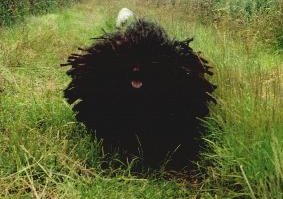
The Puli a lively dog, allegro and much legacy to its landladies and the others members of the family. The lorto innata intelligence it allows to train them easy but to the contempo they have one detached independence sense. They are a lot adapted to the agility, obedience and the paraded ones in extensions. They are introduced prudent in the disowned but never aggressive comparisons of: they can bark and ringhiare if they understand that theirs landladies threatened and in danger. The Puli adapted to grown particularly small children but if entirety not will not be problems.
Problems of health:
The Puli one race much fort. The only problem of these dogs could be the insorgence of the dysplasia to the hip. Other important problems of health for this race are not known.
Life:
The Puli adatter to whichever atmosphere: vivr it is well in an apartment that in one small farm. They are adapted to all the types of climates without difficolt. They are well also without a garden on condition that capacities come to walk at least a pair of times to the day.
Exercise:
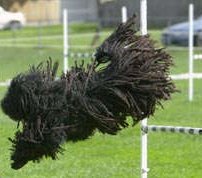
These dogs are live to us and active of nature and are to the maximum of the felicit when it leaves you free to run and to play, above all if an other dog or the same owner joins to the game. They love the water and they are of the swimmers provetti but naturally they would not have to be laciati single during this attivit.
Longevit:
The dogs pertaining to this race live 12 devout years and.
MAINTENANCE:
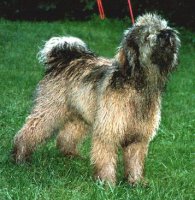
the ropes begin to form themselves naturally around to the six mei of life of just cucciolone, when sottopelo the soft lanuginoso is stirred with the rough external mantle. To this point dividend must be proceeded by hand several the cords with one width comparable to that one of one matita. This procedure turns out to be much pleasant and relaxant one for just the dog and if made regularly it employs time little. The eyes and the orecchie always must be cleaned up and cut regularly nails. This race does not lose the hair. Who allergic one to the hair, pu to try to take a copy of this race, poich their hair much various one from the common one.
STANDARD
Head and skull In the small and dry complex. Of forehead it appears round and of elliptic profile. The skull to the tact, round; the snout devout short: its length corresponds to 30% of the length of the head. The sopracciliari arched ones are pronounced; stop a po marked. The straight nasal cane; the nose does not appear to rounded off and dulled tip bens. Tartufo proportionally large and like the eyelids and labbra, black.
Orecchie The orecchie have the shape of one V wide and rounded off towards the bottom. The neck forms an angle of 45 degrees with the horizontal, muscoloso line and of medium length. Through folto the hair case is not succeeded to notice some contour preciso.Nel in which they were looked at of furrows, would imply us some defect.
Teeth The jaws, advanced and inferior turn out developed very; the strong and regular set of teeth. The teeth I recorded to you close to scissor, in how much those inferiors touch, with the front face, to the posterior face of those superiori.Gli other teeth are overlapped. The labbra they are very stiff. The eyes, round, have color caff; the alive and intelligent look. The orecchie are placed to a medium height, very attacked and left then to penzolare towards the bottom; in state of eccitamento the auricular pavilions move alone, but never, absolutely, towards lalto.
Log The garrese as soon as found; the solid dorsal line, of medium length; the lombi they are short. The wide thorax. The rather short rump, leggermente scoscesa; little visible because of the falling back tail; the vertebre tail they are 18-20. Along hair of the rump one gets confused with that one of the rump, ragion for which little obvious it.
The thoracic case of medium width, high and deep; the front limbs are very knit you to the log; the ventre leggermente retratto. The low part devout of the log given from the inferior limit of the thorax. A particularly appreciate wide river basin in the females.
Posterior limbs Lombi and the thighs are long and many muscolosi. The coxali boneses form an angle resisted with the femore; this, in its turn, of it forms one equal, of 100 degrees with the tibia.
The garretto strongly, the short and dry inferior part. Metatarso the shape with the horizontal line an equal angle to that one of the metacarpo; the posterior feet are, regarding those front ones, a po devout long. The length between the posterior limbs and greater that nellanteriore. The hard nails, forts and, have color gray slate; the plantari bearings are full and elastic.
Front limbs The bachelor shape with the femore a straight angle. Lomero of medium length, very muscolato and parallel, with lasse longitudinal of the log. The elbows, regarding the thoracic case, do not have to be n detach to you too much n adherent. The arm, forms with lavanbraccio an angle di120/130 degrees. Long and straight, perpendicular, very stiff and muscoloso Lavambraccio; in the inferior part short and strongly. Metacarpo the shape with the horizontal line an angle of 45 degrees. The feet are harvests, round and solid; the nails appear strong, hard and of color gray slate; the plantari bearings are full and elastic. Thefront limbs are straight and, between of they, medium width.
MOVEMENT The Puli does not make steps long; its characteristic gallop short, little wide, agile and much lesto.
Hair The skin has color gray slate and a lot pigmented in all the variet of color. Tartufo, labbra and eyelids are black. The uniform dark palate, or has dark base with strongly pigmented specks; the red language clearly Unghie and bearings are black or gray slate. A little pigmented speck to the tolerated chest purch has the maximum circumference of 5 cm of diameter, and in egual way it they are the hairs white men between the fingers. Other spots are not appreciate. The cape formed from rough hairs of cover and gives under fine and lanoso hair. The natural state of the hair decided from the relationship between the two types of hair. A hair of abundant cover with too much little sottopelo renders the little compact and opened cape. In the contrary case an exaggerated entangling of the hair is had, until to its infeltrimento.
The just relationship between the two members of the hair produces the correct and characterized cape from cordicelle, provoked also from a uniform enrichment. On the rump and lombi the hair to catch up one the maximum length, comprised between the 8 and 18cm; on the head and devout legs it instead short (3-6 cm). . Esistono anche esemplari nei quali il pelo tocca a terra.
. SQUALIFICA Enognatismo and pronounced prognatismo; straight orecchie, straight or truncated tail; pezzatura or chocolate color, also only in the pigmentazione; for the males under i 34 cm and above i 50 cm; females under i 31 cm and over i 47 cm as far as laltezza to the garrese.
Ransom Laltezza to the appreciate garrese, second the averages, is gone around for the males on i 40-44 cm, but acceptable one also between 37 and i 39 cm or between i 45-47 cm.
For the females an appreciate height between the 37 and i 41 cm but acceptable one also between 34 and 36 cm or i 42 and i 44 cm.
. Le misure indicate delle singole parti del corpo sono riferite , in % allaltezza al garrese.
. Lunghezza del tronco100%
. Altezza del torace45%
. Larghezza del torace33%
. Circonferenza del torace125%
. Lunghezza della testa 45%
. Lunghezza del muso 30% della lunghezza della testa
. Lunghezza delle orecchie 50% della lunghezza della testa
. Peso: 13-15 Kg nei maschi; 10-13 Kg nelle femmine.
DEFECTS Long snout; straight neck; long log outside from the square; straight rump; rilasciata tail; short, smooth, flat, opened or infeltrito hair; eyes clear brown, a height to the single garrese of 34-37 cm, or 47-50 cm in i males; or of 31-34 cm and 44-47 cm in the females.